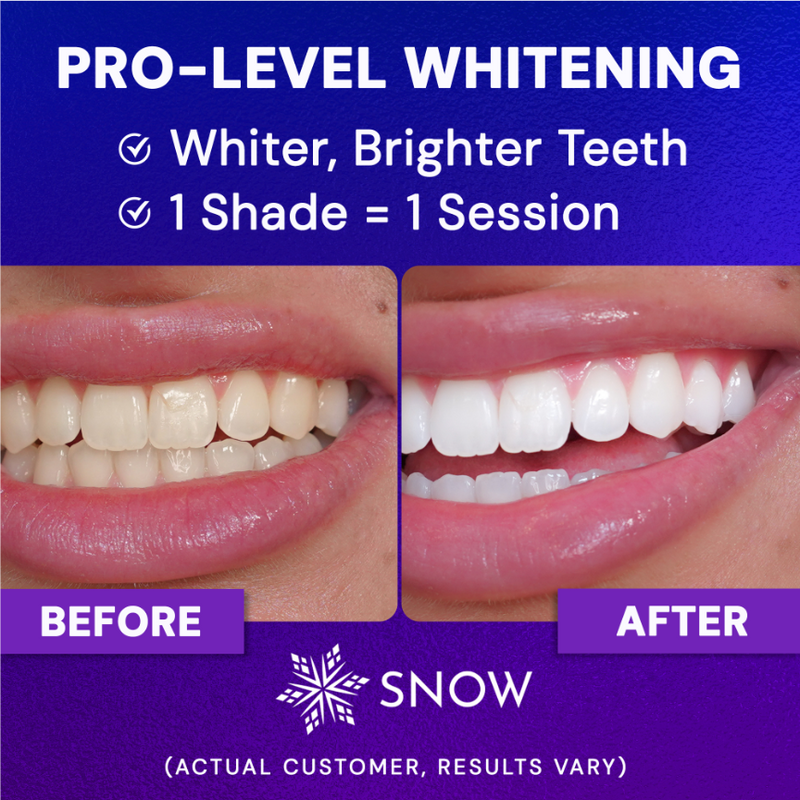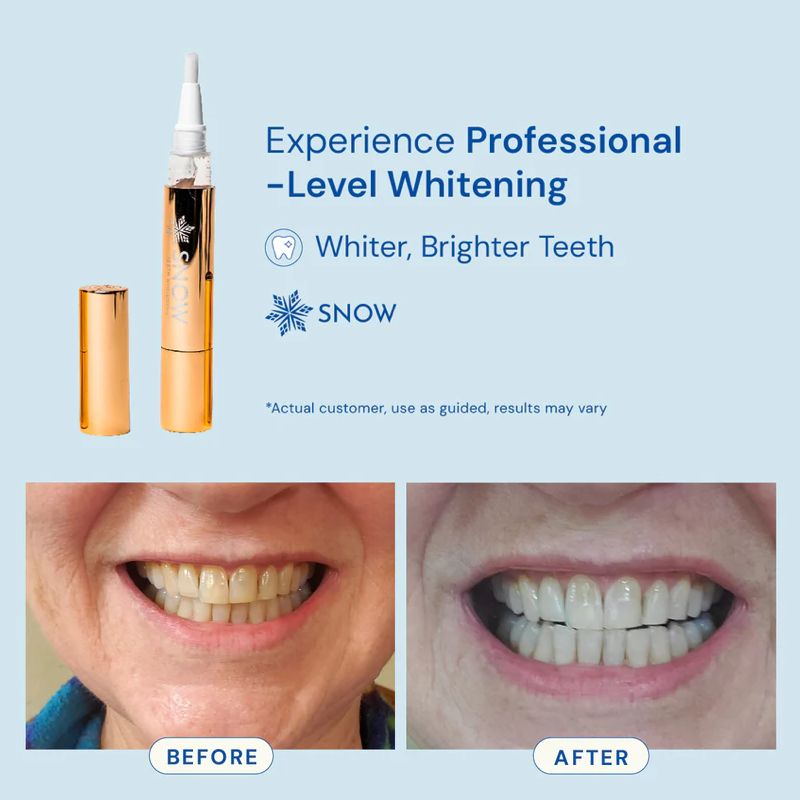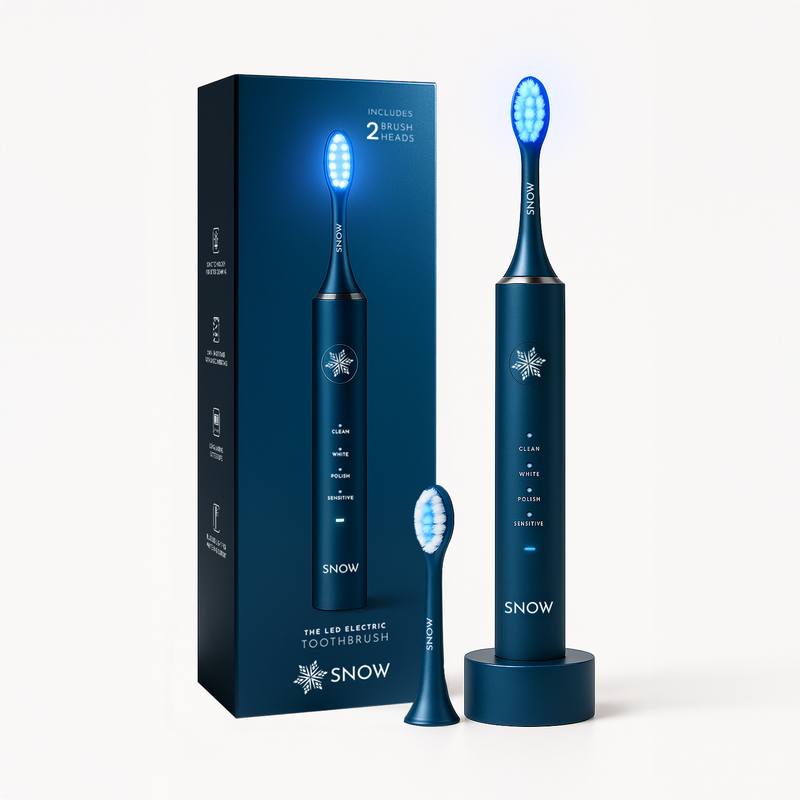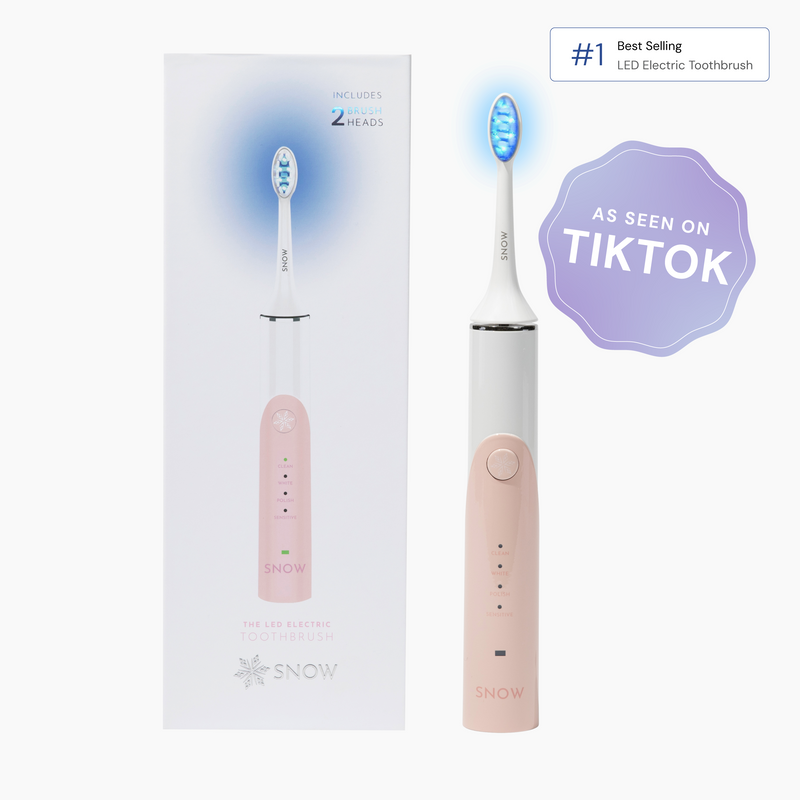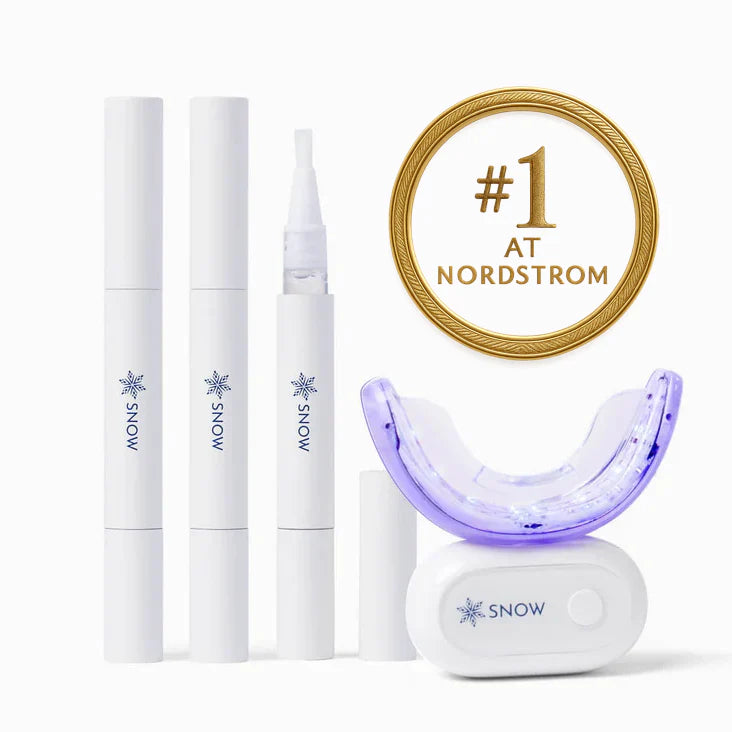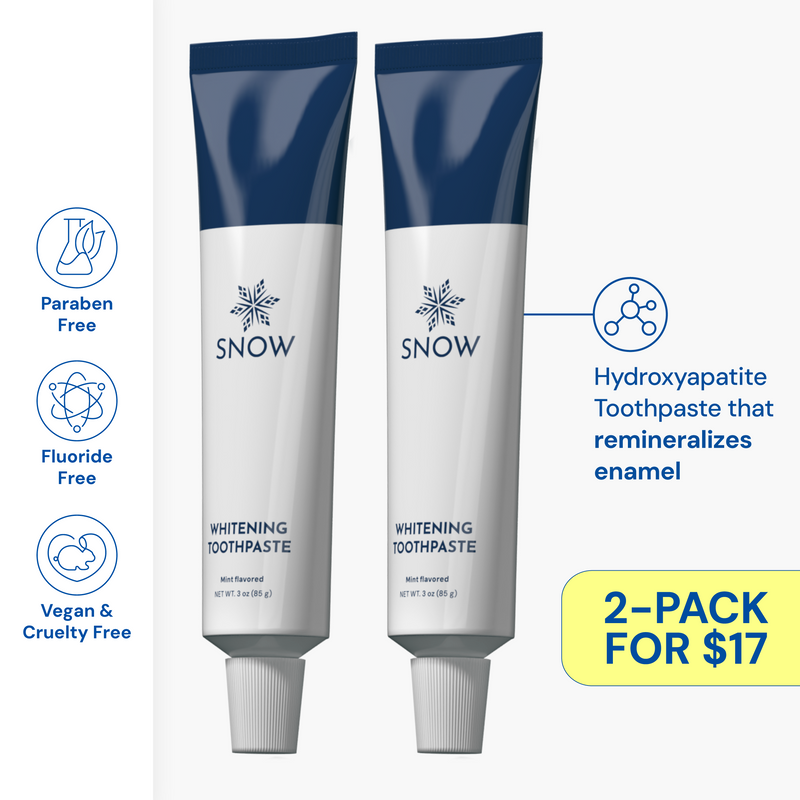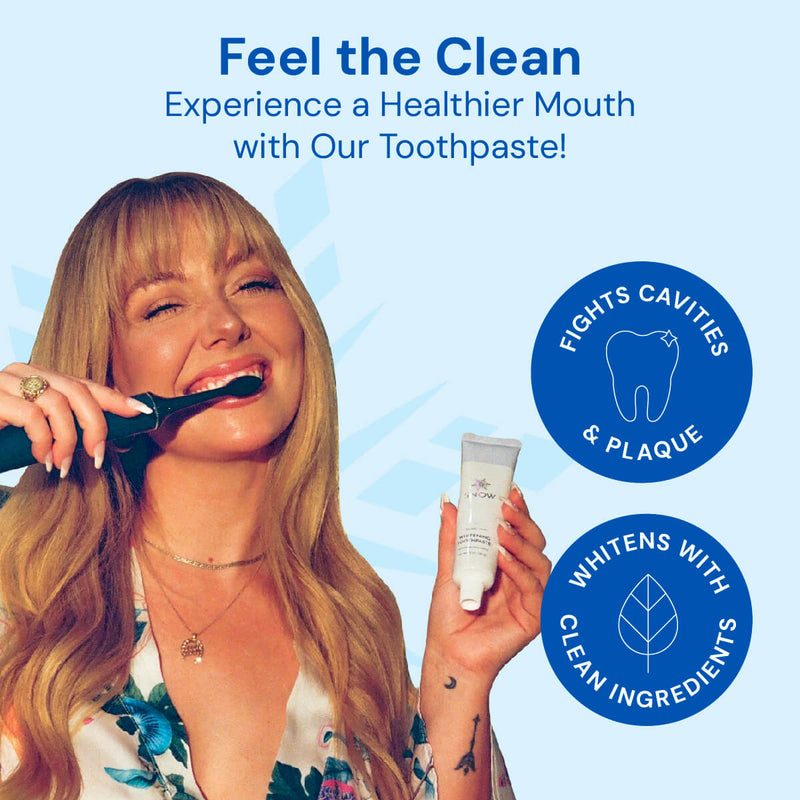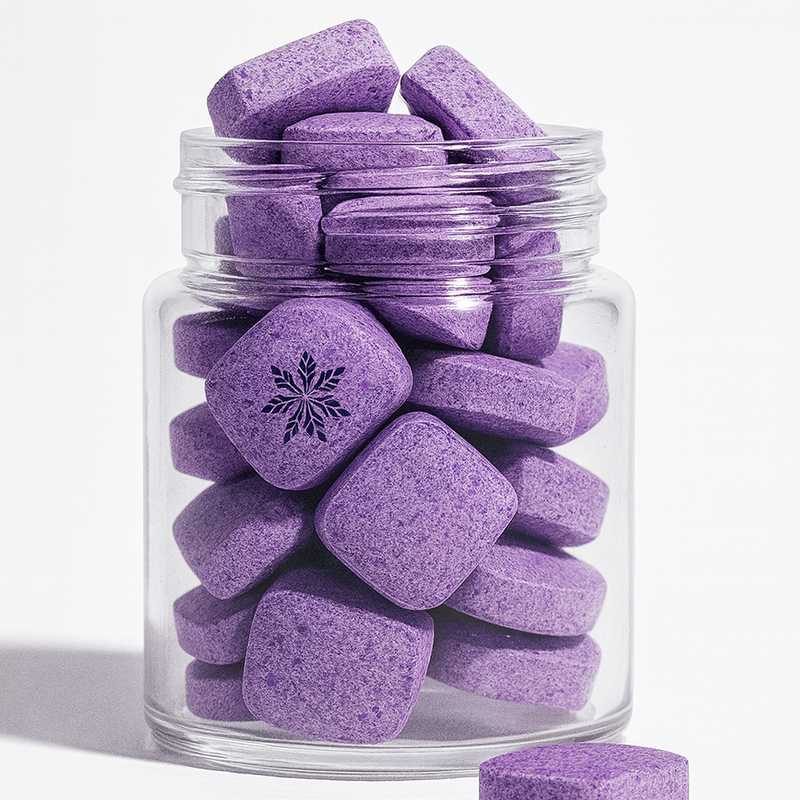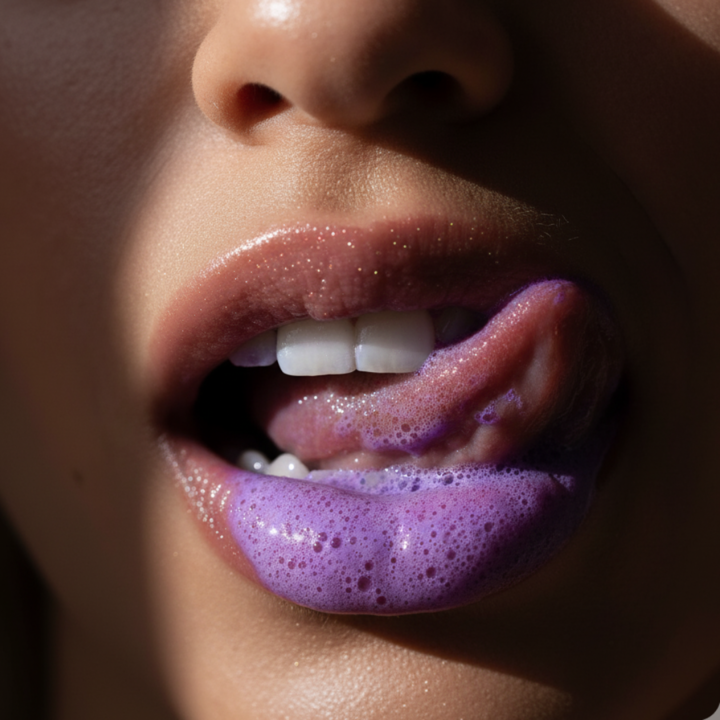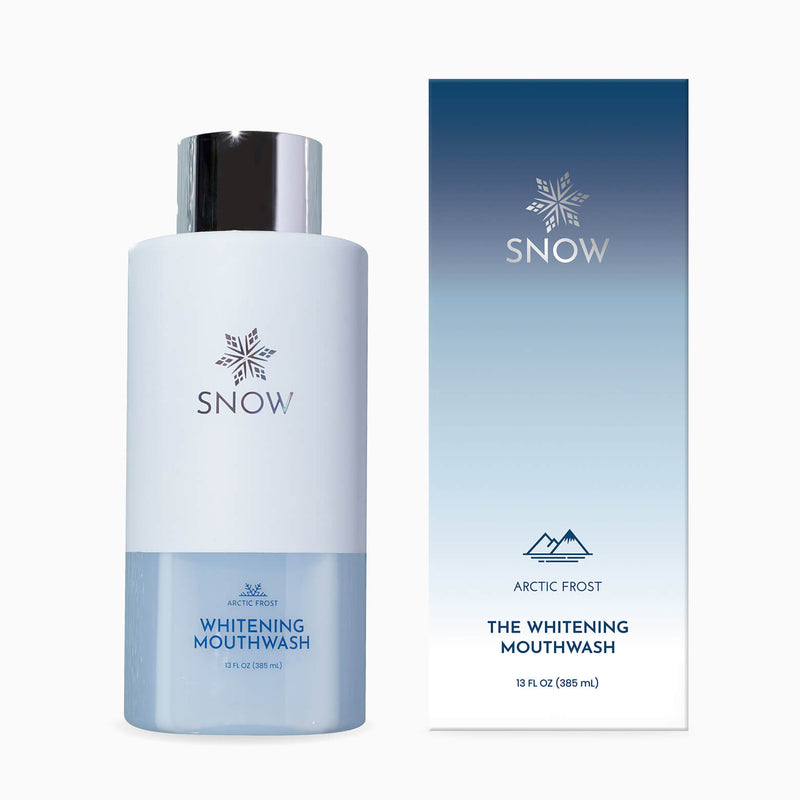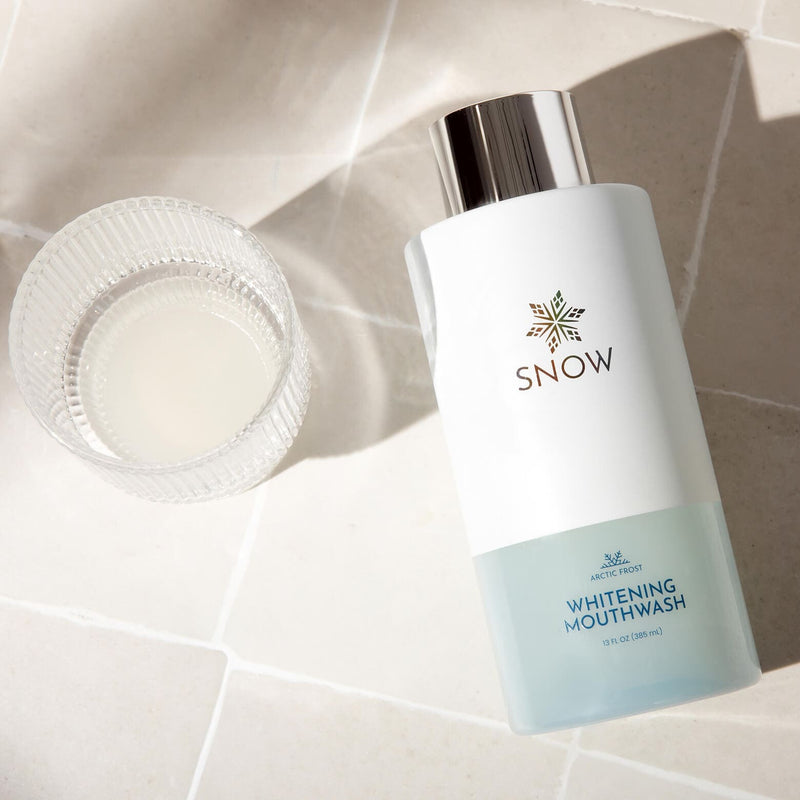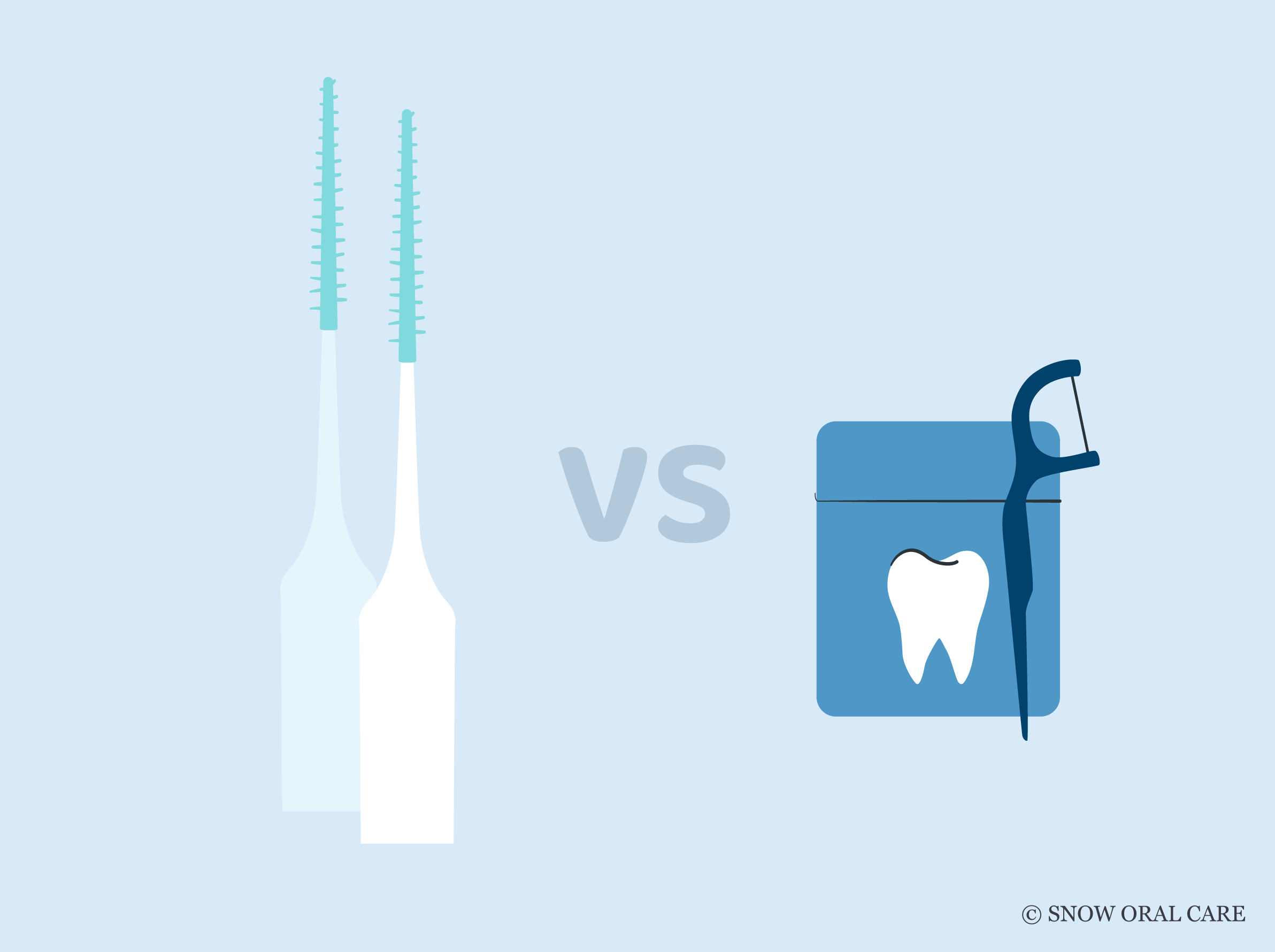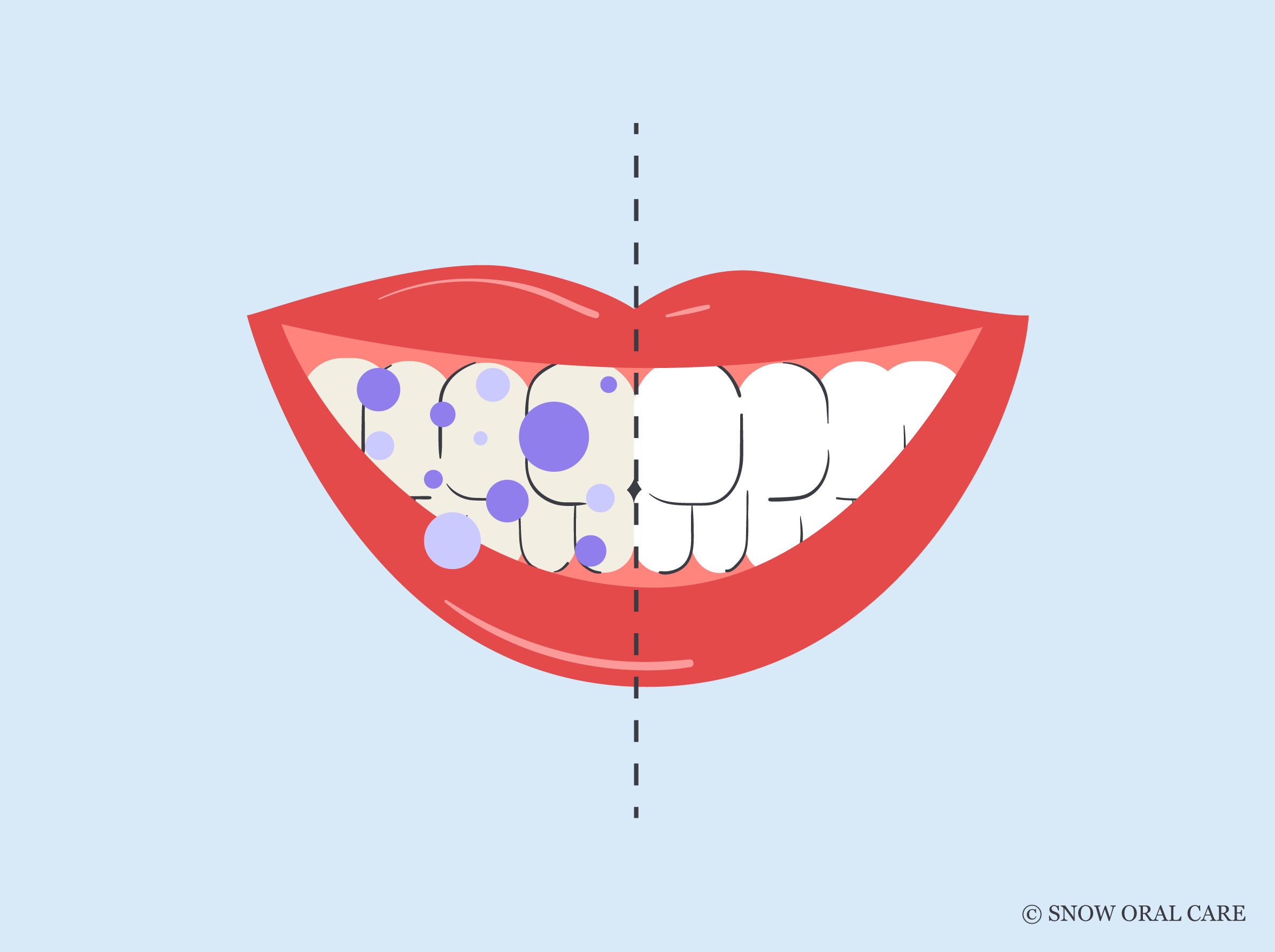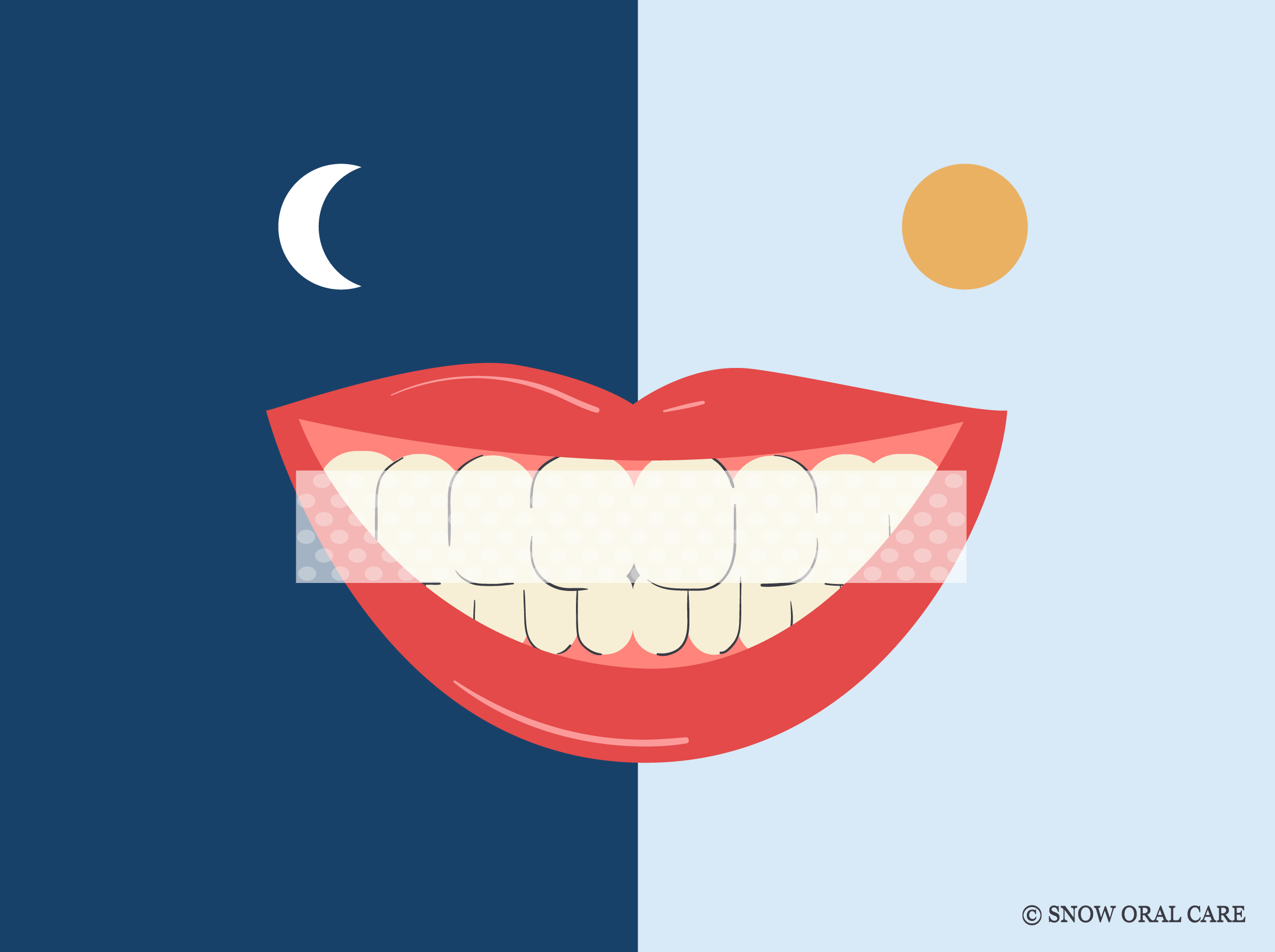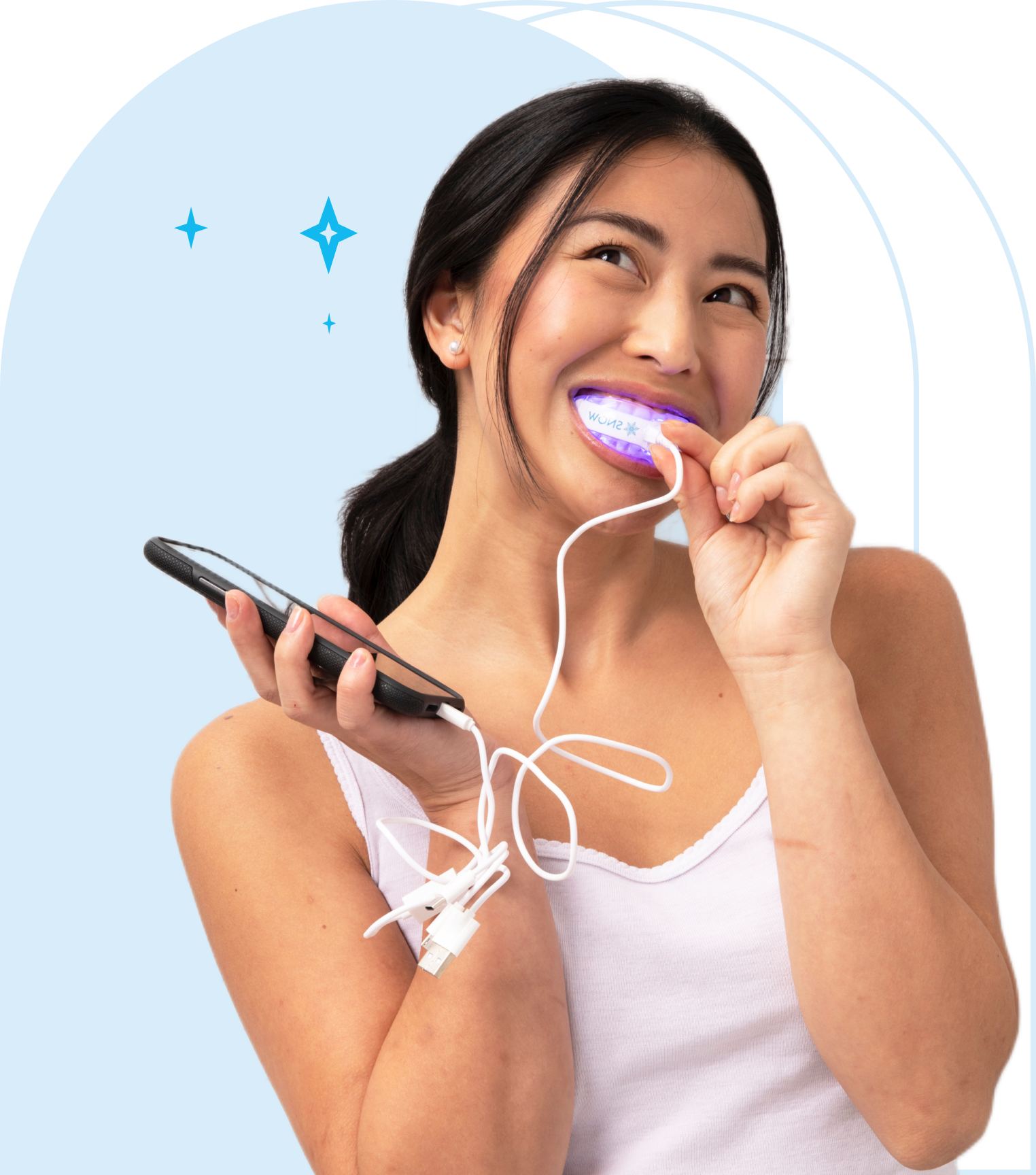Wondering what kind of results you can expect from teeth whitening? ‘Teeth whitening before and after’ transformations reveal impressive changes. This article dives into real examples, explains how teeth whitening works, compares professional and at-home options, and discusses possible side effects.
Key Takeaways
-
Teeth whitening treatments can significantly enhance dental aesthetics and boost confidence, with dramatic results evidenced in real-life transformations.
-
Professional whitening treatments typically provide faster and more effective results compared to at-home kits, but both methods may cause side effects like tooth sensitivity.
-
Post-treatment care is crucial for maintaining whitening results; avoiding staining foods and following a good oral hygiene routine can prolong the effects of whitening.
What Is Professional Teeth Whitening?
Teeth whitening is one of the most popular cosmetic dental treatments — and for good reason. It offers a fast, effective way to remove stubborn stains and discoloration that regular brushing or over-the-counter whitening products often can’t fix.
Professional whitening treatments use concentrated whitening agents like hydrogen peroxide or carbamide peroxide, which penetrate deep into the enamel to break apart discoloration. The result? A visibly brighter smile, often in just a single visit.
Modern advancements in dental care have made these treatments not only more effective but also safer and more comfortable for patients. Whether you're dealing with years of coffee stains or just looking to refresh your smile, professional whitening offers a dramatic improvement with minimal downtime.
Why Do Teeth Turn Yellow? (And How Whitening Fixes It)
Ever wonder why your teeth don’t look as white as they used to? It mostly comes down to two things: what your teeth are made of and the habits that affect them over time.
Your teeth have two layers:
-
Enamel – the hard, white outer shell
-
Dentin – the softer, yellowish layer underneath
Enamel can wear down with age, brushing too hard, or eating acidic foods. When that happens, the yellow dentin starts to show through, making your teeth look dull or discolored.
Then there are the usual suspects: coffee, tea, red wine, berries, and tobacco. These leave behind surface stains that build up and make teeth look brown or grayish over time.
That’s where teeth whitening comes in. Whitening treatments use ingredients like hydrogen peroxide or carbamide peroxide to break down stains on the enamel, revealing a cleaner, brighter smile underneath.
But heads up — whitening isn’t for everyone. If you have sensitive teeth, thin enamel, or certain dental issues, it’s best to check with your dentist first to see if whitening is right for you.
Knowing what’s behind the color changes in your teeth helps you make smarter choices about how to bring back your sparkle — and keep it.
Real-Life Teeth Whitening Transformations
Seeing is believing. The power of teeth whitening is best illustrated through real-life transformations. Before-and-after galleries showcase the dramatic changes that a single whitening treatment can bring. Imagine a 29-year-old female patient who saw her teeth lighten by an astonishing 12 shades, or a 54-year-old man who achieved an 8-shade improvement.
These transformations are not just about aesthetics; they can significantly boost confidence and self-esteem. Younger patients, like a 22-year-old male patient who brightened his smile by 4 shades, also experience impressive results. Overall, teeth whitening treatments can lead to remarkable improvements in both teeth color and personal confidence.
How Teeth Whitening Works
So, how does teeth whitening work its magic? The secret lies in hydrogen peroxide and carbamide peroxide, the primary agents in most whitening products. These compounds:
-
Break down into hydrogen peroxide
-
Penetrate the enamel to remove both surface and deeper stains
-
Work by breaking up stains into smaller pieces, making them less concentrated and thus, less visible.
Professional whitening treatments use bleach, typically in the form of hydrogen peroxide, to effectively remove both surface and deeper stains.
In whitening toothpaste, hydrogen peroxide diminishes stains without compromising tooth cleanliness. This process ensures that your teeth not only look whiter but also remain healthy and clean, helping to whiten them effectively.
Professional Teeth Whitening vs. At-Home Kits

When it comes to teeth whitening, you have two main options: professional teeth whitening treatment and at-home kits.
Professional whitening treatments can achieve results several shades lighter in just one session, whereas at-home kits often require multiple applications over weeks. The higher concentrations of bleaching agents used in professional treatments lead to faster and more effective results, especially for individuals with severe staining.
Convenience is a significant advantage of at-home kits, but they often fall short in terms of speed and effectiveness. While both methods can cause side effects like tooth sensitivity, dental professionals can better manage these risks during in-office treatments for the patient. Dental professionals can also tailor treatments to accommodate different sensitivity levels, ensuring patient comfort throughout the whitening process.
Professional treatments are also tailored to individual needs, ensuring optimal results and minimizing the risk of gum irritation.
Here’s a quick side-by-side comparison to help you see the main differences between professional teeth whitening and at-home kits at a glance:
|
Feature |
Professional Whitening |
At-Home Whitening Kits |
|
Speed |
Fast – usually 1 visit |
Slower – requires multiple uses |
|
Effectiveness |
Stronger, deeper whitening |
Mild to moderate whitening |
|
Safety |
Supervised by a dentist |
Self-administered; higher risk of misuse |
|
Customization |
Tailored to your needs |
One-size-fits-most |
|
Convenience |
Requires an appointment |
Use at home, anytime |
|
Cost |
Higher |
More affordable |
|
Best for... |
Tough stains, quick results |
Lighter stains, gradual change |
Common Side Effects After Teeth Whitening

Teeth whitening is safe for most people, but there are a few common side effects to be aware of:
1. Tooth Sensitivity
Many individuals experience sensitivity to hot or cold foods and drinks after whitening. This usually lasts one to three days and ranges from mild discomfort to sharper pain. Most of the time, it goes away within 24 to 48 hours and can be managed with over-the-counter pain relievers.
2. White Spots on Teeth
Some patients notice white spots on their teeth following a whitening session. These are often areas of decalcification — places where minerals have been lost from the enamel — and may become more or less visible after treatment. They're typically harmless but can be noticeable.
3. Gum Irritation
Especially with at-home kits, whitening gel can sometimes irritate the gums. This happens when the product isn’t applied correctly or spills over onto the soft tissue. Using a custom-fitted tray can help minimize this risk. It's also important to follow the instructions carefully and avoid overuse.
Post-Treatment Care for Long-Lasting Results
To ensure your teeth whitening results last, it’s essential to follow specific post-treatment care guidelines.
Avoid colorful foods and drinks like spaghetti with marinara sauce, red sauces, red wine, ketchup, blueberries, coffee, and tea during the first 48 hours after treatment. Your teeth are more susceptible to staining during this period, as the enamel's pores are more open, increasing vulnerability to stains, so it’s crucial to consume light-colored, non-acidic foods.
Good oral hygiene habits can prolong the brightness of your teeth. These include:
-
Brushing twice a day
-
Flossing
-
Using at-home whitening trays strategically to help maintain your results
-
Using anti-sensitivity toothpaste for those who experience sensitivity
-
Rinsing your mouth after consuming dark-colored foods to help prevent new stains from forming
-
Using a straw when drinking staining beverages like coffee or tea to minimize contact with your teeth
Foods and Drinks to Avoid After Whitening
After undergoing teeth whitening, it’s crucial to avoid certain foods and drinks that can lead to staining:
-
Coffee (contains tannins that contribute to discoloration)
-
Red wine
-
Alcohol (especially red wine, beer, and dark liquors)
-
Dark fruits like blackberries and cherries
-
Citrus fruits
-
Sugary candies
These items can stain your teeth due to their acidity and dark pigmentation, leaving them stained. Alcoholic beverages, in particular, contain staining compounds and tannins that can quickly undo whitening effects.
Maintaining your whitening results involves avoiding acidic and colorful foods and beverages and practicing good oral hygiene. By steering clear of these staining foods and reducing alcohol intake, you can keep your teeth looking bright and beautiful for longer.
Effective Maintenance Tips
Keeping your teeth white after a whitening treatment requires ongoing maintenance. Recommended methods and products to maintain teeth whiteness include:
-
Mixing baking soda with liquid hydrogen peroxide
-
Whitening serum
-
Whitening kits
-
LED toothbrushes
-
Whitening toothpaste
-
Whitening mouthwash
Using customized trays with a lower peroxide dosage once a month can help keep your teeth bright without causing sensitivity.
Home-use whitening products like washes, strips, gels, and paint-on films can lighten teeth by 1 or 2 shades after several days of use.
Your lifestyle choices significantly influence the longevity of your glass whitening results, making regular brush touch-ups essential to enjoy your normal favorite drink and eat.
Can Teeth Whitening Treat All Types of Stains?
Teeth whitening can be very effective — but it's not a one-size-fits-all solution for every kind of stain. The results largely depend on whether the stains are extrinsic (on the surface) or intrinsic (deeper inside the tooth).
Extrinsic stains are caused by everyday habits like drinking coffee, tea, or red wine, eating staining foods, or smoking. These surface stains are usually the easiest to treat with whitening products. Most professional and at-home treatments can significantly lighten extrinsic discoloration, especially when combined with regular cleaning.
Intrinsic stains, on the other hand, are located within the tooth and are often caused by things like genetics, trauma, or certain medications. For example, antibiotics like tetracycline or minocycline can leave behind gray or brown stains that are much harder to remove. In these cases, professional whitening may help, but results tend to be less dramatic — and may require multiple sessions over time.
It’s also important to note that whitening only works on natural teeth. If you have dental restorations such as crowns, veneers, or fillings, they won’t respond to bleaching agents. Patients with amalgam fillings should also speak with their dentist before whitening, as there may be concerns about structural changes or potential mercury release.
The Role of Cosmetic Dentists in Teeth Whitening
When it comes to getting the best teeth whitening results, having a skilled cosmetic dentist makes all the difference — and few know this better than Dr. Brian Harris, the creator of SNOW®.
Dr. Harris isn’t just a top cosmetic dentist — he’s also the mind behind one of the only oral care brands actually created by a dentist. SNOW® is known for its cleaner ingredients and has been trusted by millions of people looking to brighten their smiles safely and effectively.
His unique approach to smile transformations draws people from all over the country, and his work has been featured in places like Cosmopolitan, Oprah Magazine, USA Today, and Allure.
Working with a cosmetic dentist like Dr. Harris means your whitening plan is tailored to your needs — whether you have sensitive teeth, past dental work, or just want the fastest, most noticeable results. It's this personalized approach that makes professional whitening not just more effective, but more comfortable, too.
What to Expect During a Professional Whitening Procedure

A professional teeth whitening procedure typically lasts about an hour and involves several steps to protect your gums and enhance your smile. A special contraption is set up inside the mouth to protect the gums during the whitening process. Zoom teeth whitening, for example, uses a light-activated hydrogen peroxide gel to create a whiter smile.
In-office procedures effectively treat deep and surface stains using high concentrations of hydrogen peroxide. Patients may experience sensitivity to temperatures and staining as a side effect of the high percentage of hydrogen peroxide used. Despite this, most patients are thrilled with the results, achieving a natural and impressive improvement in their teeth color.
How Long Do Teeth Whitening Results Last?
The longevity of teeth whitening results can vary based on several factors:
-
Results from professional teeth whitening can last from six months to three years, depending on care and maintenance.
-
Customers typically enjoy whitening results for 1 to 3 years.
-
The method of whitening chosen can significantly affect the duration of results.
Factors such as dietary habits, like the consumption of staining foods and drinks, can influence how long the whitening results last. Coffee stains are among the most common reasons for whitening results to fade, and regular coffee consumption can quickly diminish the effects. For individuals with porous enamel who are frequently exposed to stains, whitening results may only last six months. However, teeth with non-porous enamel can maintain whitening results for up to two years.
Whitening Products That Deliver Best Results

Whitening your teeth at home doesn’t have to mean harsh ingredients or unpredictable results. That’s why millions trust SNOW® — a dentist-founded oral care brand known for effective formulas that are gentle, clean, and easy to use.
From the DiamondSeries® Whitening Kit, designed with hydroxyapatite and potassium nitrate for bright results without the sting, to dissolving purple strips that whiten and melt away without the mess, SNOW® offers something for every smile. Looking for a boost? The Gold Whitening Pen and Magic Toothpaste Boosters are perfect for touchups or everyday shine.
Everything in the SNOW® line — from LED toothbrushes to postbiotic mouthwash — is made to fit naturally into your daily routine while delivering dentist-level care. And with thousands of 5-star reviews, it’s easy to see why SNOW® has become a go-to for people who want professional results without the in-office hassle.
Teeth Whitening Before and After Wrapped Up
Teeth whitening can significantly enhance your smile and boost your confidence. From understanding how the process works to choosing the right products and maintaining your results, this guide provides a comprehensive overview. By following the tips and recommendations, you can achieve and maintain a brilliant, white smile.
Frequently Asked Questions
How long does whitening your teeth last?
Teeth whitening results typically last between six months and three years, largely depending on your oral care and maintenance practices. To prolong the effects, maintaining good dental hygiene and avoiding stain-causing foods and drinks is essential.
Is getting your teeth professionally whitened worth it?
Professional teeth whitening offers faster and more dramatic results compared to at-home treatments, using higher concentrations of bleaching agents and expert supervision to ensure safety and effectiveness. Many patients find the investment worthwhile for the confidence boost and improved appearance it provides.
How much should teeth whitening cost?
The cost of teeth whitening varies depending on the method used and the provider. Professional in-office treatments generally cost more than at-home kits but deliver quicker and more noticeable results. It's important to consider the quality of the treatment and the experience of the dental professional when evaluating cost.
Is there a downside to teeth whitening?
While teeth whitening is generally safe, some individuals may experience temporary tooth sensitivity or gum irritation. Overuse or improper application of whitening products can also damage enamel. Consulting with a dental professional before treatment helps minimize risks and ensures the best outcome.















































